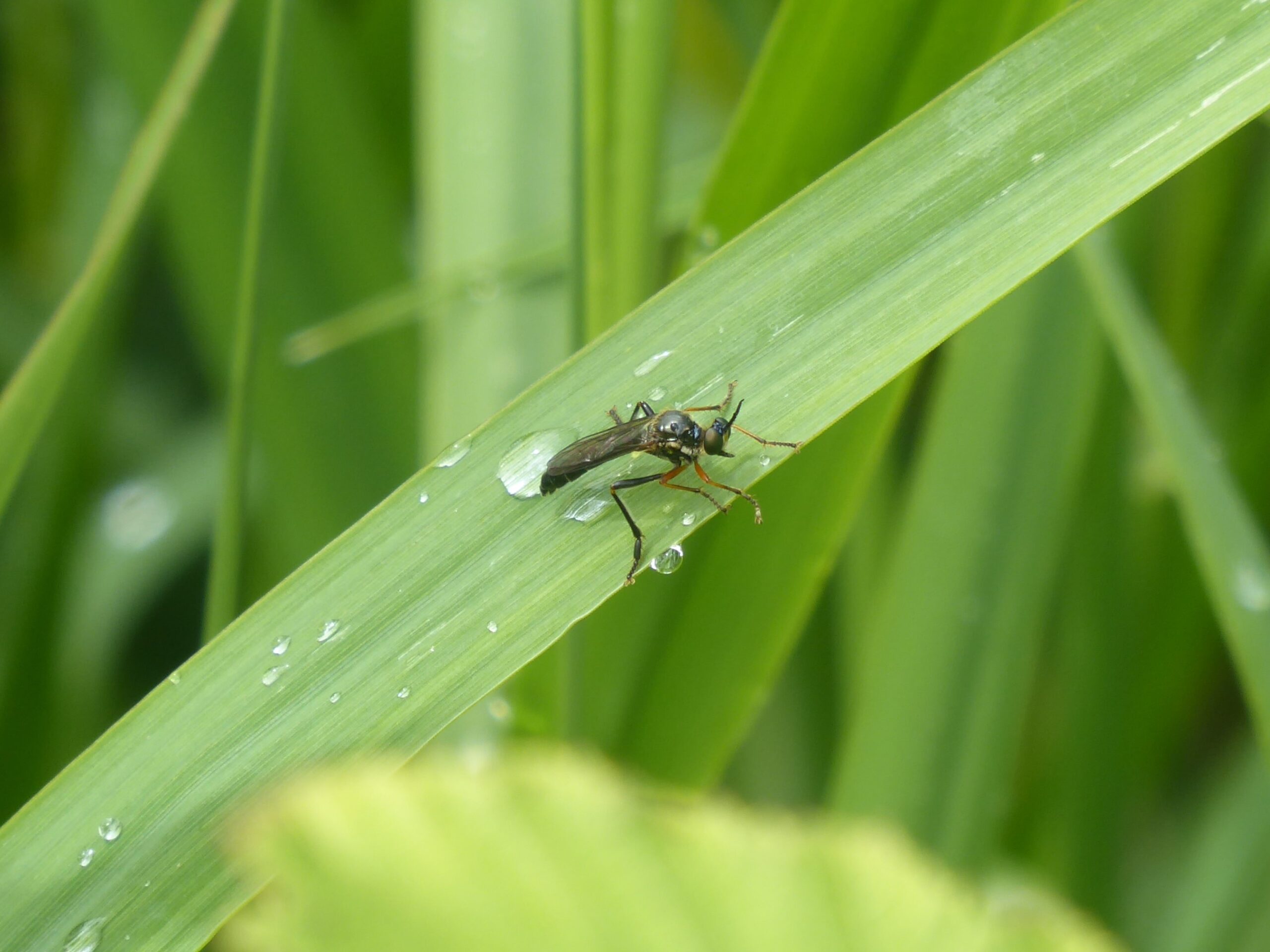The weather has turned more showery and colder. On my walk today, I noticed a common marble moth, dock and other bugs and beetles, a robber fly and a snipe fly on the foliage, many yellow dung flies everywhere and tiny froglets and egg-case-carrying wolf spiders underfoot. Buttercups, speedwells and herb Robert are still the main flowers blooming, but I have now noticed more wood avens flowers, as that seems to be on my radar now.
I was very pleased with my haul of bugs and flies. The common red-legged robberfly, was identified by its antennae joined halfway down and its legs – the front two pairs of which are orange the rear pair black. It has white halteres and a fairly thick waist compared to other robberflies. It also has shiny silvery patches on the side of its thorax. These are known as ‘shimmer stripes’ and according to the Natural History Museum are used in courtship. Furthermore, the robberfly is also distinguished by its ‘beak’, which you can see in the picture. With this needle-shaped projection it pierces its prey and injects it with nerve toxins to paralyse it and dissolve its insides. It is instant death. It will perch on foliage and wait to pounce on unsuspecting prey – flying insects, especially parasitic wasps. Their preferred habitat is scrub and woodland and they are widespread in the southern half of England.
